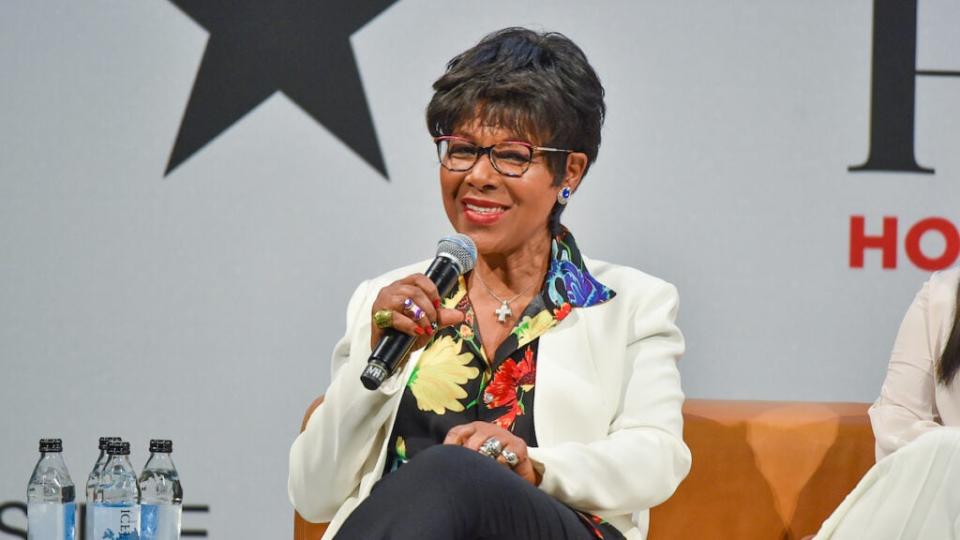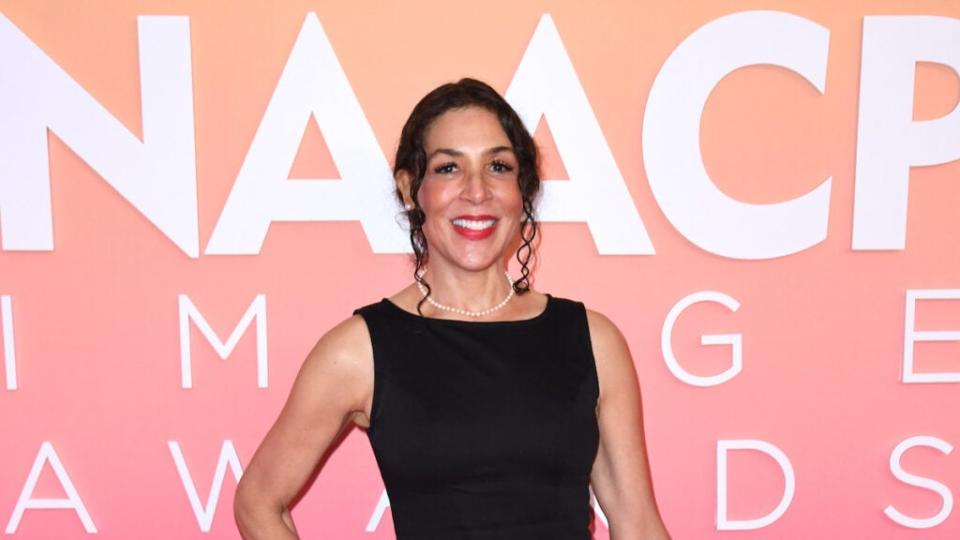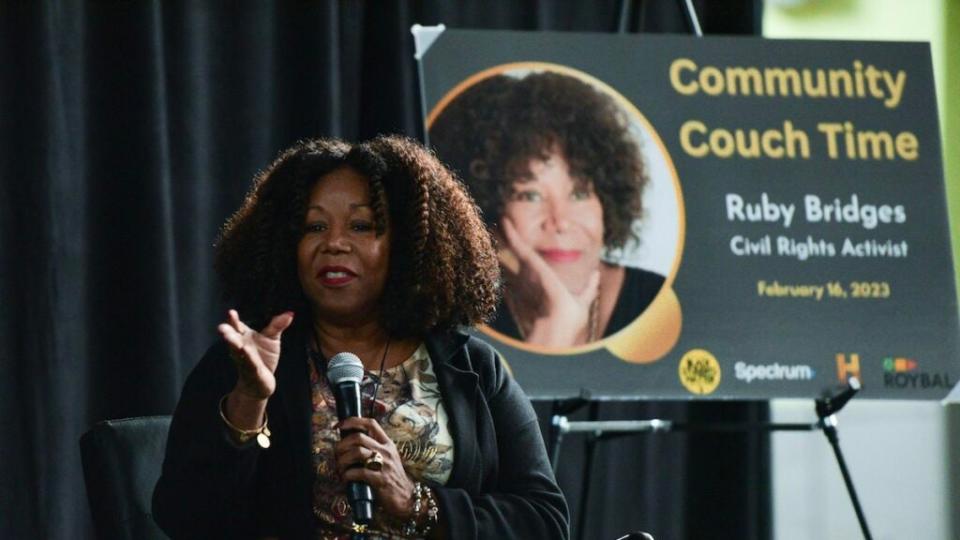‘Ruby Bridges’ Team Talks Florida Ban: ‘A Concerted Effort to Roll Civil Rights Back’ | Exclusive
- Oops!Something went wrong.Please try again later.
- Oops!Something went wrong.Please try again later.
- Oops!Something went wrong.Please try again later.
- Oops!Something went wrong.Please try again later.
You’re reading an exclusive WrapPRO article for free. Want to level up your entertainment career? Subscribe to WrapPRO.
In 1996, “The Wonderful World of Disney” premiered the made-for-TV movie “Ruby Bridges,” a true-life story about the 6-year-old girl who helped desegregate a Louisiana elementary school in 1960. Critics lauded the film for its exploration of racism, and it went on to become a prominent part of school curriculums on American segregation.
Now the film has come under attack, with a Florida school considering a ban after a parent complained. The backlash against “Ruby Bridges” doesn’t surprise its creators, who exclusively spoke to TheWrap about the difficult process of getting the movie made in the first place and their thoughts on the attempt to suppress it today. Their story highlights how much is at stake as politicians seek to reshape the teaching of history, and how authors and filmmakers are getting caught in the middle.
“I was surprised yet not surprised,” Leah Keith, a former creative executive at Disney who put the film together, told TheWrap. “One of the more salient thoughts was the movie [was made] 25 years ago, the events [of the movie] took place 60 years ago, and we’re still having this conversation.”
There’s some irony in the players involved in the “Ruby Bridges” saga: Florida Gov. Ron DeSantis has campaigned against “woke” corporations, singling out Disney, a large employer in the state, for pushing what he claims is a progressive agenda in its creative works and workplace policies. But the film’s director, Euzhan Palcy, didn’t find Disney particularly welcoming in the 1990s, and initially resisted its overtures to make the film.

Palcy sees a through line from the difficult environment in which she made the movie to the hostile reception it’s receiving decades later.
“The greatness of a nation is in its ability to own its history,” she told TheWrap.
The fight against “Ruby Bridges”
The book on which “Ruby Bridges” was based has been targeted by conservative groups like Moms for Liberty for years. The movie version came under fire last week after the parent of a student at North Shore Elementary School in St. Petersburg, Florida, complained about its use of racial slurs. Historically accurate scenes of white people threatening Bridges might have students believing white people hate Black people, she claimed.
The Pinellas County School District, of which North Shore is a part, maintained that it hasn’t banned the film, as some media outlets reported. It was shown as part of the school’s Black History Month and was not set to be presented for the remainder of the school year, a district spokesperson said. “The school is now engaging in the formal objection process to review the challenged material,” the representative said, while the movie remains available in the district’s movie library for schools provided that “all procedures for student viewing of movies are followed.” The district didn’t elaborate on what those procedures are.
Also Read:
DeSantis Says ‘You Ain’t Seen Nothing Yet’ in Disney Dispute
“This is a concerted effort to roll civil rights back,” said Toni Ann Johnson, who wrote the script for “Ruby Bridges.”
Johnson pointed out that DeSantis has signed bills banning the teaching of critical race theory and gender identity in Florida schools, and advocated for parents to band together to remove presumably offensive school teachings from children’s curriculums.
“This movie is being banned is just some DeSantis nonsense,” Johnson said.

Decades on, emotions run deep for the women who brought the film to life at Disney. It’s a miracle the film was made in the first place, they said, even though the political climate in some ways felt friendlier, Johnson recalled.
“We had someone in office who didn’t feel entirely anti-people of color, anti-liberal ideas, even though [former President Bill] Clinton did some things that people of color object to. We felt that he was on our side,” Johnson said. “I didn’t feel frightened to be an American.” Yet “racism still existed” and “racism existed in the cultivating of ‘Ruby Bridges,'” she added.
The “Ruby Bridges” team saw a cultural bias in filmmaking at the time that prioritized white points of view even within Black issues. Johnson pointed out the 1987 feature film “Cry Freedom” about Black South African activist Steven Biko (played by Denzel Washington), which is told through the lens of Biko’s white friend Donald Woods (Kevin Kline).

“I was afraid the studio wouldn’t allow me to to do justice to that movie,” Palcy said. She turned down the directing job three times.
Johnson and Palcy cited the allyship of Keith, one of the few Black executives working for a major studio at the time, as critical in convincing them to take on the project. Palcy said she didn’t want to tell any of the executives the real reason she didn’t want to film the movie. But Keith, who had just started working at the studio, called her and emphasized that she understood the story.
“She said ‘Trust me, Miss Palcy. We will let you make the movie that you want to make,'” Palcy said.
Also Read:
Disney Blocks DeSantis Takeover of Reedy Creek With Stealth, Last-Minute Rule Changes
The film had its share of challenges. Keith said Palcy had to fight to have the film include the use of the N-word as Ruby enters the school, to illustrate the real hatred and bigotry the 6-year-old experienced while walking into school every day.
Johnson said she butted heads with producer Marion Rees, who died in 2018. Rees, Johnson said, wanted to prioritize the story of her friend Robert Coles (played by Kevin Pollak in the film), the author of the children’s book about Bridges’ life — also a target of bans now.
One draft of the script had a romantic sequence between Coles and his wife that, according to Johnson, Palcy cut because it was unnecessary. “It wasn’t that the producers were racist, but they didn’t identify with Ruby the way I did,” Johnson said. “They were white and of a certain age, so they wanted the way into the story to be from his point of view.”
“We were dealing with something that was very emotionally charged, very divisive,” Keith said. “At the same time, we were creating entertainment for families [to] foster a conversation when the movie is over.”
Also Read:
What Victoria Alonso’s Mysterious Marvel Exit Means as Unrest Builds at Disney
That’s something the “Ruby Bridges” trio believes is missing today: a genuine conversation that involves children and their parents. “For one person to complain and have the entire establishment [say] ‘Let’s put it on hold,’ this is so vicious,” Palcy said. She said the current mentality is to “hide behind the kids” and cultivate fear.
“You cannot hide your past. How can the children learn?” she said. “People need to stop underestimating [children’s] intelligence. They have a voice.”
“People are so polarized and political [that] they’re just looking for what matches with their agenda with their political party,” said Johnson. It’s ironic, especially, considering that the claims regarding the content of “Ruby Bridges” are couched as wanting to prevent hatred and be sensitive to people’s viewpoints. Why, Palcy and Johnson asked, are the views of marginalized groups not a factor in these conversations?
“Think about all the things that children of color have had to see for all these years that didn’t take their sensitivity into account,” Johnson said. Palcy said that, if anything, the movie should be shown to allow children to ask questions. She even volunteered to help lead discussions about the film.
Everyone connected with “Ruby Bridges” marks the film as a highlight for them, both personally and professionally. And despite the circumstances under which the movie is getting brought up now, they hope the film continues to be a shining light for discussing race and one little girl’s ability to triumph against hatred.
“My father and Dr. [Martin Luther] King grew up together, were close,” said Keith. “Mom was a schoolteacher, a school librarian. I am a child of the movement. So to have an opportunity to put an incredible story like this, under the banner of the ‘Wonderful World of Disney’ for families, I took as an honor and a privilege.”
Palcy questioned how a historical feature like “Ruby Bridges” can be so dangerous in a landscape where violence against schoolchildren is all too common. “Outside America, they use the story to teach children and parents how ugly racism is,” she said. “If [people in America] feel this is wrong, what about someone shooting their own kind in the school? They don’t do anything about it. And that’s normal.”
Also Read:
Why Disney Ceded Control of Its Florida Empire to Gov. Ron DeSantis (Exclusive)

